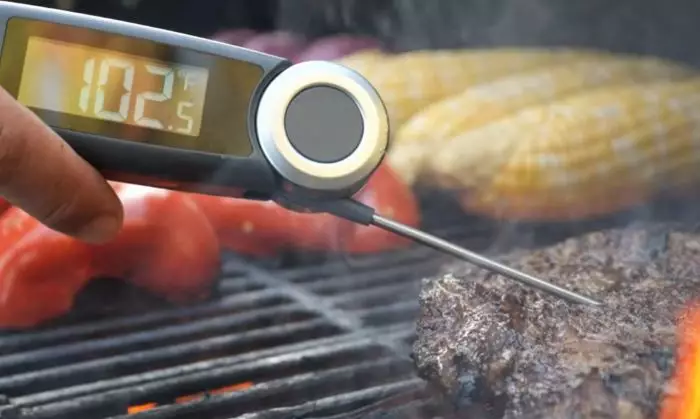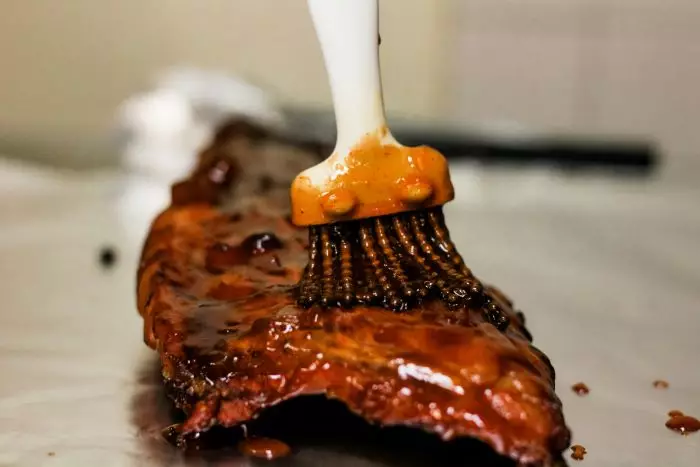
Roast, Smoke, or Fry: Thermometer Tips for Any Occasion
Got a special occasion coming up? Don’t fret, because you can cook up the perfect meal for your family and friends, whether you are roasting, smoking, or frying. Find the best techniques to cook like a pro, using a thermometer, and achieve the most perfectly succulent meat to impress your guests.
Table of Contents
Roasting Tips Every Cook Should Know
Before you discover the best tips for roasting your meat to perfection, first, what is roasting? It involves cooking with dry heat, such as in the oven. The hot air inside the oven circulates to ensure food is cooked evenly. Many households prefer roasting because the oven does most of the work. You set the oven to the right temperature and the timer, and you’re all set.
However, the actual work begins before the actual roasting. Make sure you know the proper roasting techniques to achieve results like a pro.
1. Set the Oven at the Right Temperature
Set your oven temperature according to the type of meat you want to roast. Roasting uses high temperatures, such as 350 to 420 F. However, certain types of meat are better roasted at lower temperatures of no more than 320 F.
As a guide, roast premium meats at higher temperatures and the secondary cuts at a lower temperature. High-heat roasting works for smaller, tender meat cuts because they cook in a relatively shorter amount of time.
2. Invest in the Best Roasting Tools
You need a good roasting pan, especially if you like roasting often. A heavy pan is the best choice as the low sides allow even heat distribution since more heat comes into contact with the food.
Another must-have piece of roasting equipment is a roasting rack. It suspends the meat, especially that which has tons of drippings, so the meat does not end up soaking in the liquid.
You will also need butcher’s twine to keep the shape of your food intact as it cooks in the oven. Choose a food-safe twine, which is readily available in most supermarkets.
Lastly, you need a meat thermometer. It is the secret to perfectly roasted meat, especially if you don’t want to overcook your food. An instant-read thermometer makes it easy to regularly check the food to determine if it’s done or not.
3. Follow a Cooking Temperature Chart
Using the thermometer, you must cook your meat to the recommended internal temperature when roasting. Again, it differs from one cut of meat to another. Use this guide to know the ideal roasting temperature, depending on the type of meat.
For beef cuts, let us explore the different types of cuts and the recommended internal temperature. A boneless ribeye roast must be cooked at an oven temperature of 350 F and is cooked when it reaches 135-145 F, depending on the thickness and weight of the cut.
For a bone-in ribeye roast, you must cook it in a 350 F oven to 135 F to 145 F, for medium to medium rare doneness. Meanwhile, a tri-tip roast must be cooked at 425 F until the internal temp reads 150 F (about 40-50 minutes at medium rare).
A ground beef meatloaf should be roasted for 1 ¼ to 1 ½ hours in a 350 F oven until it reaches an internal temperature of 160 F. This guideline applies for a 2-lb meatloaf.
Lastly, a tenderloin beef roast of 4-6 lbs must be cooked at an oven temperature of 425 F for up to 60 minutes. Aim for an internal temperature of 140 F for medium-rare doneness.
When cooking with poultry, a whole chicken roast that is approximately 3-4 lbs in weight should be cooked in an oven temperature of 350 F. Cooking time is about 1 to 1 ½ hours. The internal temperature when it’s done should read 165-175 F.
And for a whole turkey roast, it should reach an internal temperature of 165 F in the breast or 175 F in the thigh. For roasted turkey with stuffing, make sure the temperature of the stuffing reads 165 F at the center. For the best results, start cooking your turkey at 425 F for an hour and then lower it to 325 F for the rest of the cooking process.

Smoking Meat Guide: Thermometer Tips
If you prefer smoking to roasting your meat, check out these handy tips to smoke like a pro.
Safety Guidelines when Smoking Meat
Smoking is a low and slow cooking method. It uses a much lower temperature than roasting or grilling. The steps you take to prepare the meat before smoking is critical for food safety and for the best quality smoked meat.
First, ensure to completely thaw the meat before placing it into the smoker. If you are going to marinade the meat, never re-use the raw marinade.
And as always, follow the USDA recommendations on the internal temperature for smoking meat.
Smoker vs. Meat Temperature
One challenge of taking the temperature of smoking meat is that it is easy to falsely read the temperature of the smoker instead of that of the meat. Two factors are crucial in achieving the best smoked meat: maintaining a consistent smoking temperature and knowing when to take the meat out of the smoker.
Therefore, you must constantly monitor the ambient smoker temperature to ensure that your meat is cooking at the ideal rate. You should also monitor the internal temperature of the meat as it cooks.
Invest in a meat thermometer with a probe that is connected to an external device for ease of monitoring. Some thermometers even have an app that you can use to know when to check the meat for doneness. Insert the probe into the thickest part of the meat for an accurate reading. If your meat cut has a bone in it, make sure the probe isn’t touching the bone or a pocket of fat. But if you are smoking a smaller meat cut, you can do without a probe and just use an instant-read thermometer.
Here is a temperature guide when checking your smoked meat for doneness with a thermometer:
- Beef brisket – Smoke for 12-20 hours at 225-250 F to reach an internal temp of 195-207 F
- Chuck roast – Smoke for 12-20 hours at 225-250 F to reach an internal temp of 195-205 F
- Tenderloin – Smoke for 2 to 3 hours at 225-250 F to reach an internal temp of 190-200 F
- Prime rib – Smoke for 15 mins per lb of meat at 225-250 F to reach an internal temp of 135 F for medium doneness
- Baby back ribs – Smoke for 5 hours at 225-250 F to reach an internal temp of 190-205 F
- Pork butt – Smoke for 1.5 hours per lb of meat at 225-250 F to reach an internal temp of 200-207 F
- Lamb rack – Smoke for 1 ¼ hr at 250-275 F to reach an internal temp of 135-140 F
- Lamb leg – Smoke for 4 to 8 hours at 250 F to reach an internal temp of 195-205 F
- Whole chicken – Smoke for 2 to 3 hours at 275-350 F to reach an internal temp of 165 F
- Whole turkey – Smoke for 3 to 5 hours at 275-350 F to reach an internal temp of 165 F

Frying Like a Pro with Thermometer Tips
Want to become a frying expert? Follow these thermometer and temperature tips to ace your frying every single time.
Thermometer is Non-Negotiable When Deep Frying
You should never deep fry without a thermometer. It is important for various reasons. The first reason is that a food thermometer ensures your food is cooked to the right temperature.
The next reason is that deep frying to the right temperature provides maximum flavor and the right texture to your food. You can experience the right balance of crispy exterior and tender interior. It makes fried food more enjoyable when cooked at the right temperature.
Preheat Your Oil
Like preheating an oven, you must preheat your oil until it reaches the ideal temperature for deep frying. You should aim for a temperature of 350 to 375 F for deep frying. Use a digital thermometer to monitor the temperature of the oil before you put the food into the fryer.
Use a Thermometer Throughout the Frying Process
Keep your thermometer handy from the time you preheat the oil to the time you take the food out of the oil. If the food stays longer than it should, it will be overcooked and burnt. On the other hand, taking it out too early would risk the food being raw on the inside or not having the most enjoyable texture.
One Comment
Comments are closed.
Discover Other ChefsTemp Products
Discover more recipes and learn kitchen tricks by joining our cooking family on Facebook.
You may also like:















Real Estate Pretty! This has been a really wonderful post. Many thanks for providing these details.